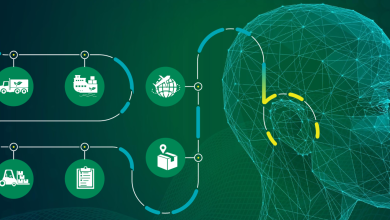Introduction
Many companies believe that maintaining GST compliance is a never-ending balancing act. Your purchase records, invoices, returns, and filings must all match exactly if you want to maintain your good standing with the tax office. Doing this by hand is slow, prone to mistakes, and, to be honest, tiresome. Automation tools have thereby revolutionised this field. They transform the most laborious aspects of reconciliation, such as establishing discrepancies or matching bills with refunds, into precise, efficient procedures. The goal of compliance is to increase trust in your financial systems and free up resources for expansion, not only to avoid fines. Let’s examine seven ways that GST reconciliation automation tools are simplifying corporate operations.
How Reconciliation Automation Tools Simplify GST Compliance
– Reducing Reconciliation’s Human Error
We must acknowledge that errors are unavoidable when individuals spend hours painstakingly comparing bills. An overlooked mismatch, a duplicate entry, or a lost number might cause your books to be out of order. Tools for automation significantly reduce this danger. It would take human team days to compare vast amounts of data from sales invoices, GST reports, and purchase registers, but they do it in a matter of seconds. Reliability here is the true value. Companies may have faith that their compliance records are correct, which lowers the possibility of fines and increases audit confidence. In summary, automation of tasks not only avoids time but also prevents expensive mistakes that can deteriorate in the future.
– Preserving Resources and Time
Just consider the number of hours that finance teams devote to reconciliation each month. The matching number is just one aspect of it; other functions include examining discrepancies, cross-checking information and ensuring that everything is presented on the schedule. This grunt job is mostly done by automation tools. It is often possible to do tasks that formerly took weeks in a fraction of the time. And here’s what that really means: your finance experts can now concentrate on higher-value activities like forecasting, analysis, and financial strategy advice instead of monotonous jobs. Automation essentially restores time, and time is always equivalent to money in the corporate world.
– Identifying Mismatches Early
One of the most difficult aspects of GST compliance is finding discrepancies at the last minute, sometimes after returns have been submitted. Returning mistakes at that point can be expensive, time-consuming and unpleasant. Early detection of incompatibilities via automation techniques changes the game. The system will alert you right away, for instance, if a supplier hasn’t submitted an invoice that you have previously documented. This makes it possible for companies to promptly follow up and address the problem before it becomes worse. The basic conclusion is that speedier compliance cycles and fewer surprises result from early identification.
– Enhancing Accurate Compliance
Regarding GST, accuracy cannot be compromised. Even little differences have the potential to attract the authorities’ notice and result in needless investigation. Businesses may keep on task by using automation solutions to make sure all entries are accurately matched and cross-verified. They also update features to comply with the most recent regulations, taking into consideration changing compliance needs. This really implies that companies fulfil deadlines with certainty and precision, not merely when they’re due. There are a lot of repercussions, including reduced fines, notifications, and more confidence that your files are clean.
– Improving Readiness for Audits
Although no one likes hearing the term “audit,” every organisation must eventually deal with it. It may be a nightmare to have incomplete or disorganised records during an audit. By keeping all reconciling data organised and readily available, automation technologies let you become ready in advance. Reports demonstrating the precise alignment of invoices, purchases, and returns may be produced in a matter of minutes. In addition to making audits less stressful, this openness demonstrates to authorities how reliable and robust your systems are. Imagine being able to confidently open your books instead of frantically trying to explain contradictions.
– Simplifying Communication with Vendors and Suppliers
This is something that a lot of companies forget: Reconciliation problems are often caused by errors made by suppliers or vendors, such as incorrectly filed invoices or missing GST information. An unending amount of back-and-forth emails may result from manually monitoring these problems. By providing a transparent record of inconsistencies that can be shared with suppliers directly, automation solutions make this process easier. The precise invoice or information that has to be corrected might be mentioned in place of ambiguous “there’s a problem” discussions. This keeps communication efficient and truthful, which not only expedites resolution but also improves business relationships.
– Increasing Adherence to Business Development
The difficulty of a company’s GST compliance increases with its size. More suppliers, more bills, and more transactions all add up. Manual techniques that could be effective for a small business often crumble as it grows. On the other hand, automation technologies scale easily. The system can process invoices with the same degree of accuracy and speed, whether you handle hundreds or thousands of them each month. In the long run, automation makes compliance more resilient. Your tools can expand with you, so you don’t need to worry about hiring twice as many financial staff to keep up with expansion.
Conclusion
It is no longer necessary for GST reconciliation to be a time and energy waster. GST reconciliation automation tools are showing that compliance may be far less stressful, quicker, and wiser. They guarantee accuracy, minimise human error, and identify discrepancies early on, all of which satisfy regulators. In addition to saving time, they enhance audit preparedness, simplify vendor communications, and grow with your company. The underlying message here is that automation is about changing how companies manage their financial obligations, not merely about checking a box. Teams may concentrate on strategy, development, and decision-making rather than boring, error-prone jobs. The result is not just easier compliance but also more robust corporate operations in general. So, it may be time to reconsider the tools you’re employing if compliance has been a pain in the neck so far. The data will always be there, but how you respond to them will have a significant impact.





